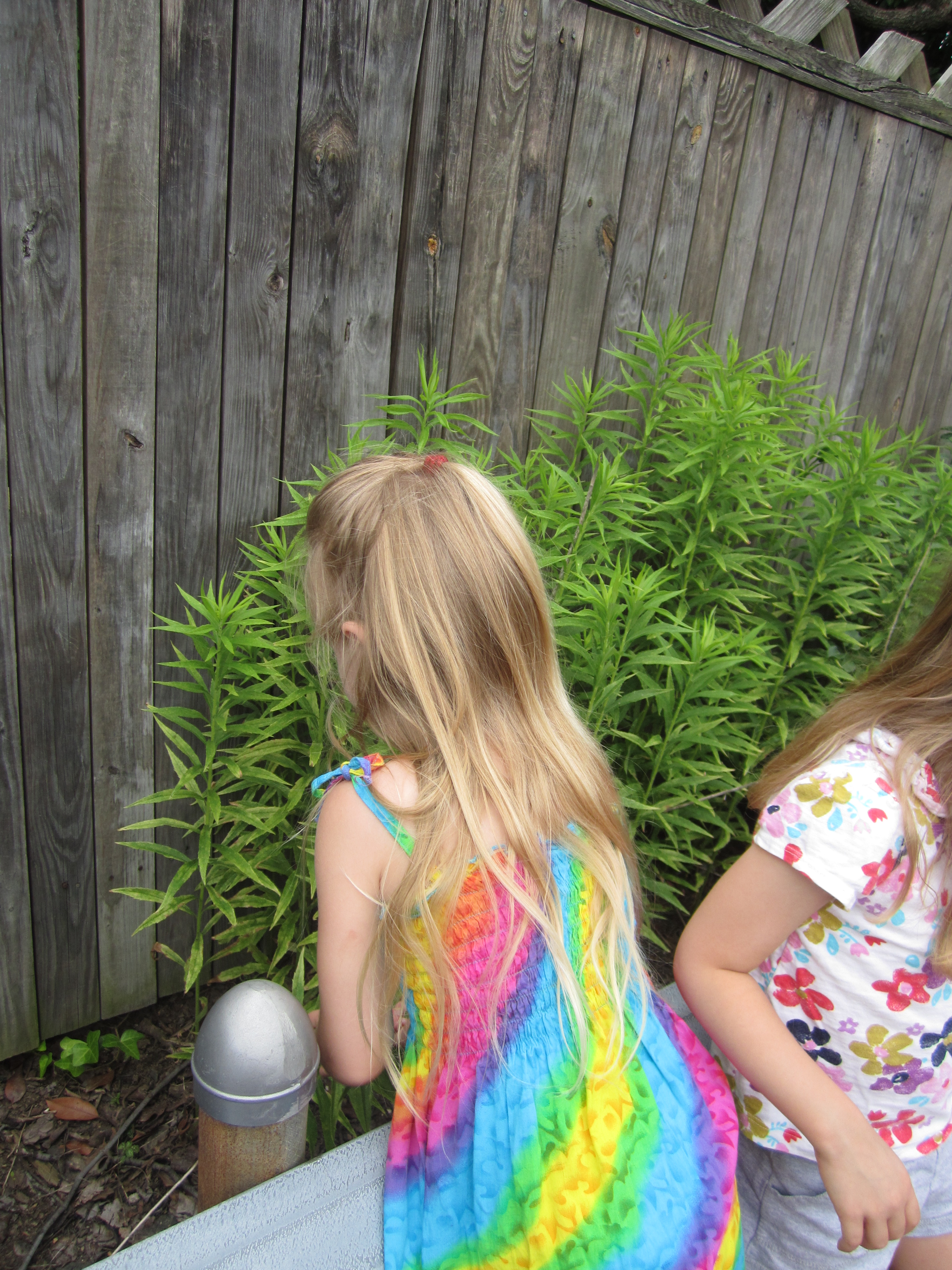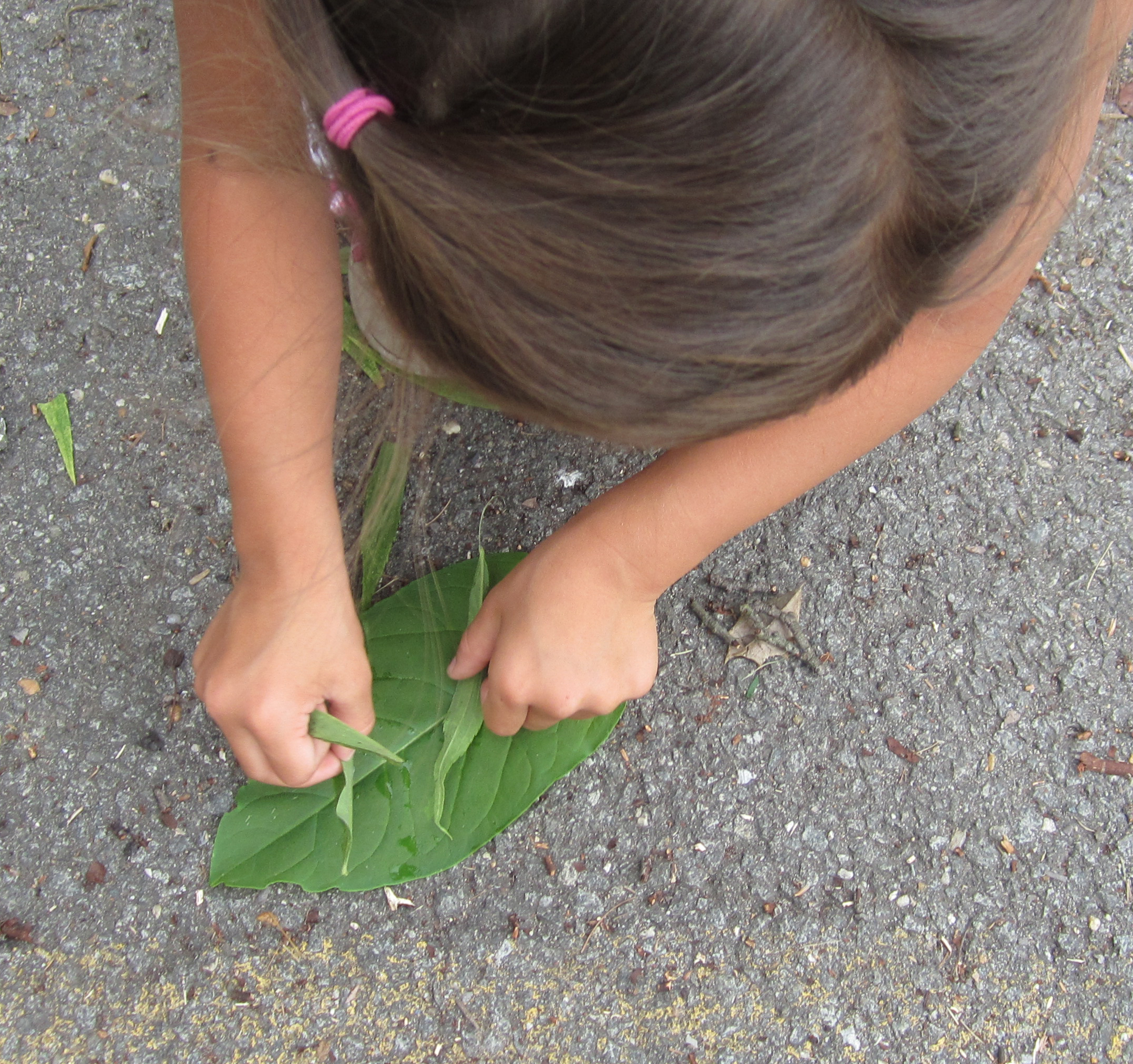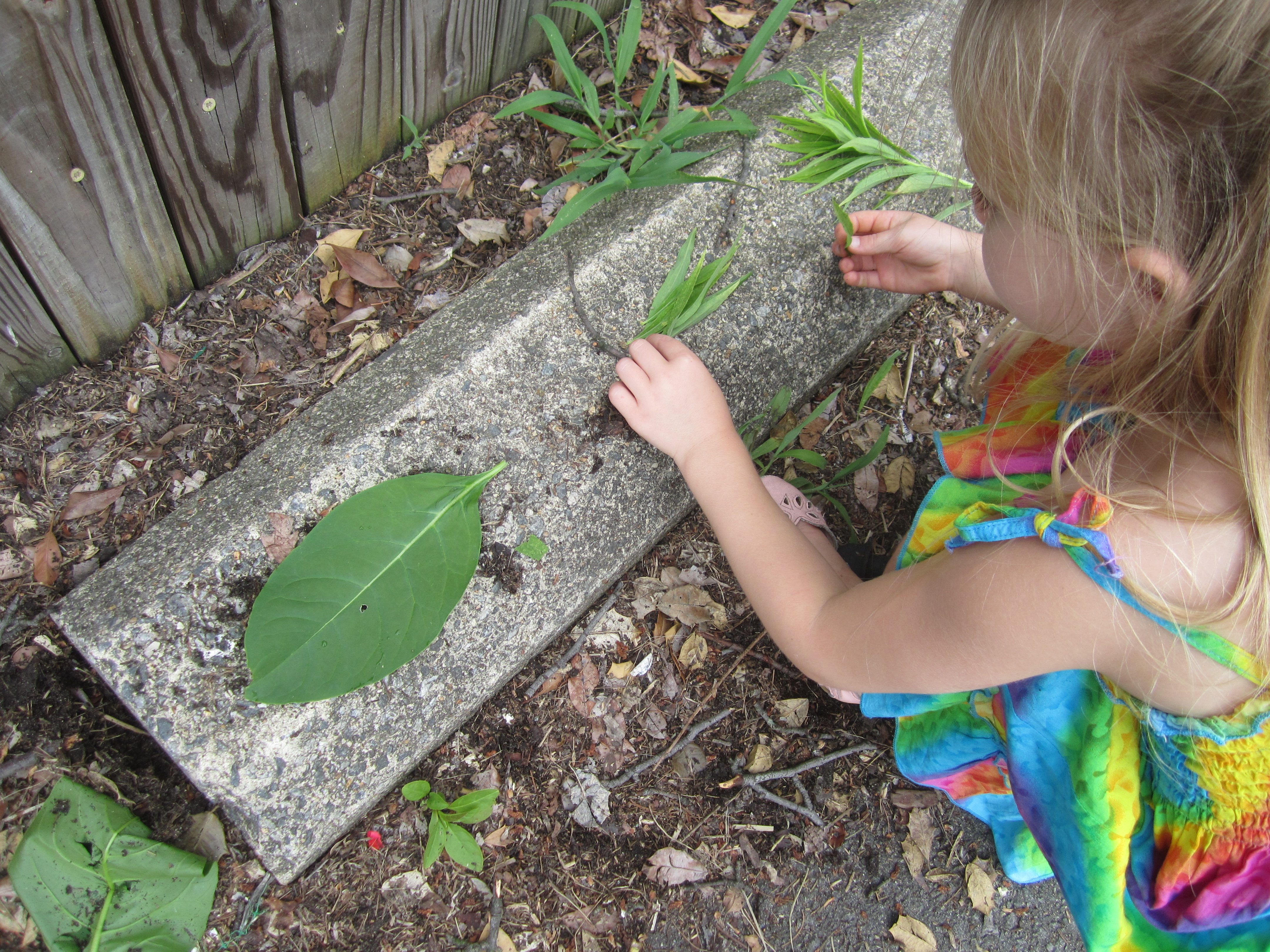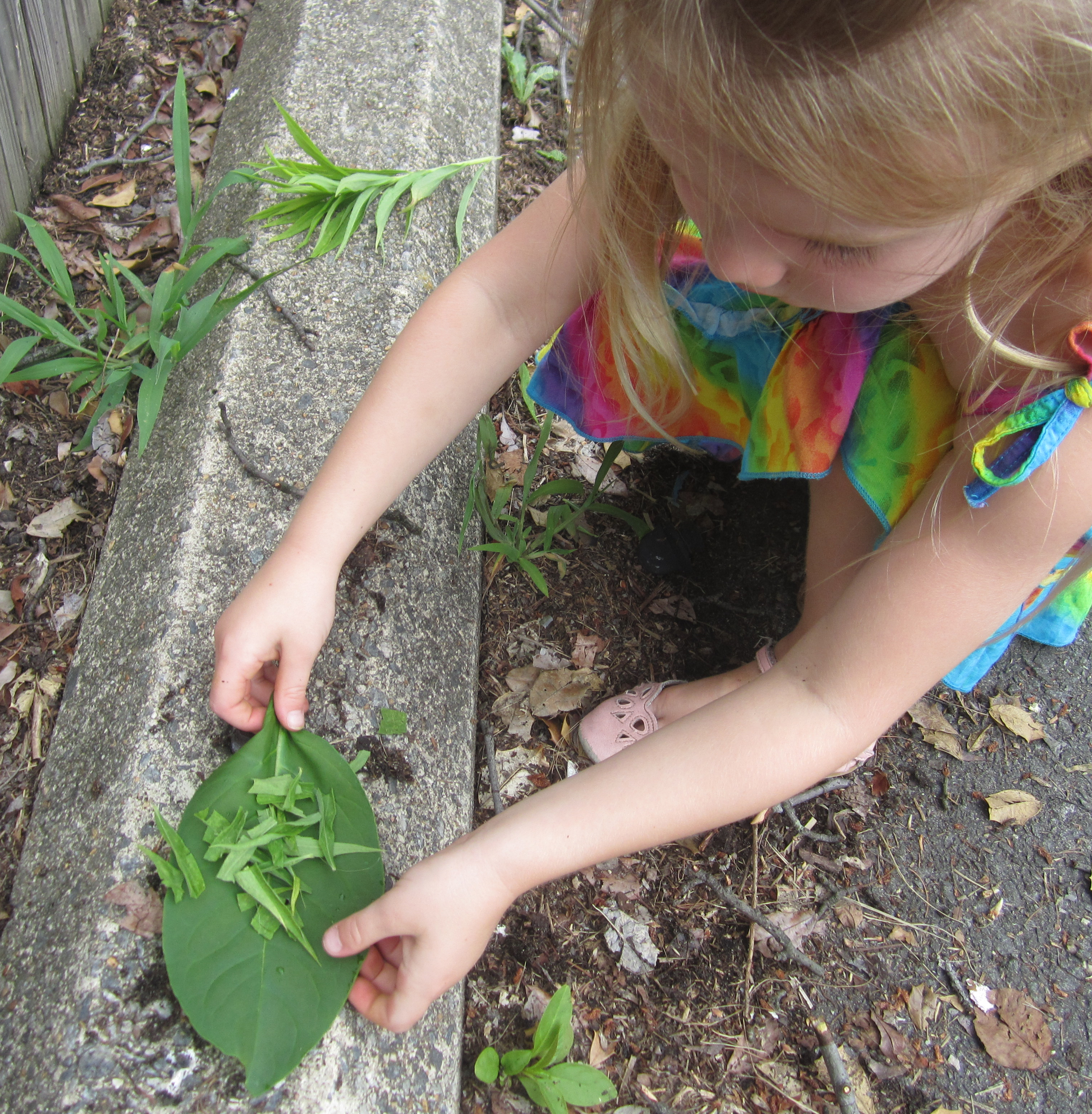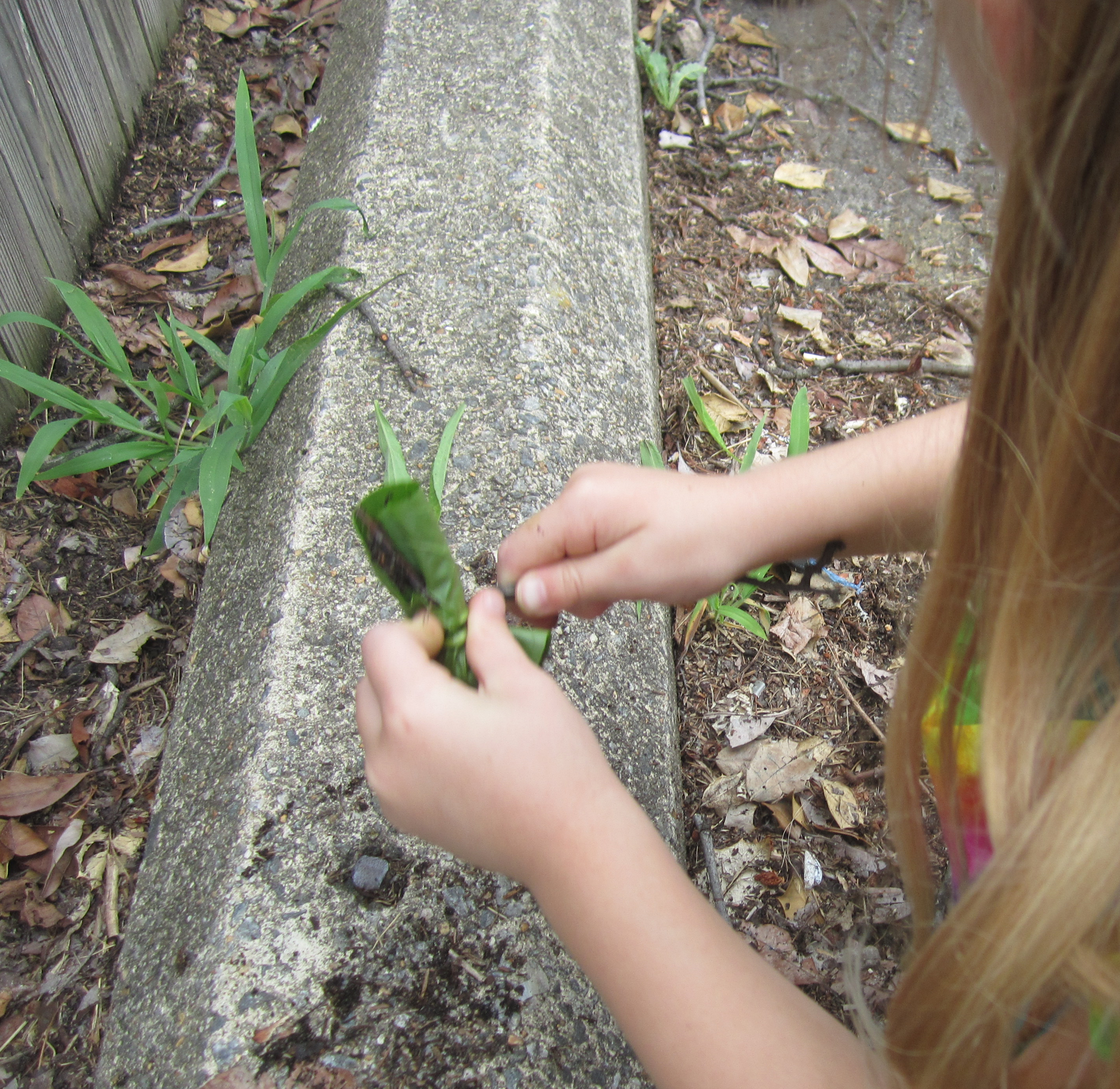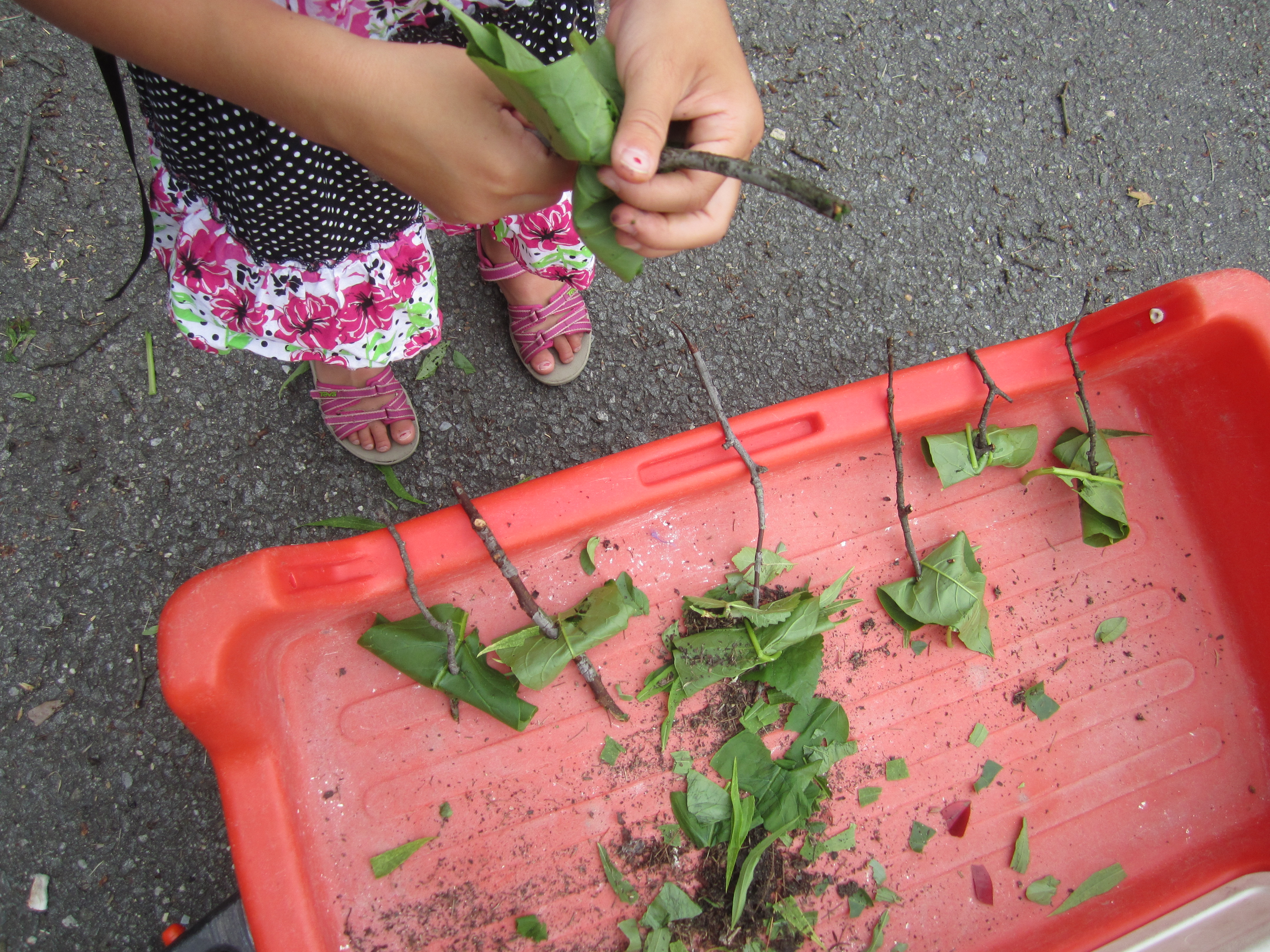But Why Does the Balloon Stick to the Wall After I Rub It on My Hair?
By Carole Hayward
Posted on 2014-06-24
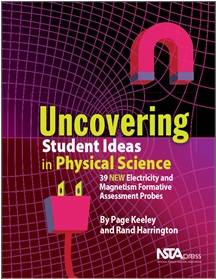 What types of materials can be electrically charged? How does current flow in a circuit? Will a magnet pick up any kind of metal? In answering these types of questions, children will reveal their own preconceptions about ideas that they bring with them into the learning environment. Their teachers need ways to help them identify misunderstandings that may occur during instruction. That’s why probes are an essential component in the science teacher’s toolkit.
What types of materials can be electrically charged? How does current flow in a circuit? Will a magnet pick up any kind of metal? In answering these types of questions, children will reveal their own preconceptions about ideas that they bring with them into the learning environment. Their teachers need ways to help them identify misunderstandings that may occur during instruction. That’s why probes are an essential component in the science teacher’s toolkit.
Page Keeley and Rand Harrington, in their book, 39 NEW Electricity and Magnetism Formative Assessment Probes (Vol. 2 in the Uncovering Student Ideas in Physical Science series), bring K-12 teachers a whole new collection of carefully researched and developed probes around electric or magnetic phenomena or concepts.
Designed to be used as formative, rather than summative assessments, these intellectually engaging probes are designed to “stimulate student thinking and involve students in productive discussions as they grapple with their own ideas and consider the ideas of others.” The feedback gleaned from each question provides non-judgmental, valuable feedback to both educators and students in grades 3-12.
The book organizes 39 probes into three sections: Electric Charge; Electric Current; and Magnets and Electromagnetism—with each section starting off with a concept matrix identifying the main concepts related to the probe and the suggested grade level for each. Related ideas from the 2009 updated version of the Benchmarks for Science Literacy and links to the Next Generation Science Standards are included as well as related NSTA resources, such as books, journal articles, and collections from NSTA’s Learning Center.
Teachers will appreciate that each probe starts off with a question and a series of responses from which students can choose—with the related expectation that students will explain their thinking on the answer they selected (such as what rule or reasoning did they use in making their predication). Each probe is accompanied by teacher background notes—critical components for educators to explore/examine prior to using each probe—that cover the following areas:
- Purpose: What is the idea that the probe intends to uncover/reveal? Does the probe fit your learning target? This section helps you answer these critical questions.
- Related Concepts: Each probe is designed to target one or more concepts (defined as a “one-, two-, or three-word mental construct used to organize the related ideas addressed by the probe and the related national standards).
- Explanation: This section offers a brief scientific explanation and clarification of the scientific content that underlies the probe.
- Administering the Probe: Importance guidance is provided for administering the probe to students and covers areas such as suggested grade levels, ways to demonstrate the probe scenario, and modifications (to adapt to different learners).
- Related Research: Each probe is informed by research.
- Suggestions for Instruction and Assessment: Need a brief suggestion to help you plan or modify your curriculum and instruction so that you can help your students who are struggling with difficult or misunderstood ideas? This section will help you do that.
- Safety: This section provides suggestions created by NSTA’s science safety consultant for practicing safe science in your classroom—a must read!
- References: References are provided for the standards, research summaries and several of the instructional suggestions provided in the teacher notes.
Keeley and Harrington, in their introduction, acknowledge that “we are surrounded daily by the phenomenon produced by electric charge—these charges are what makes things work, including all the electronic devices we own.… Yet most of us have only a vague notion of what electric charge is and even less of an understanding of where these charges come from, where they go and how they move around.”
Happy Uncovering in this easy-to-read (you don’t need to be a science specialist to understand the contents!) resource!
This book is also available as an e-book.
Learn more about other books in the Uncovering Student Ideas series.
Literacy and science: Writing and communicating
By Mary Bigelow
Posted on 2014-06-23
 This is a continuation of a question about Literacy and science: Reading and comprehension. The question dealt with incorporating literacy practices and activities into science instruction and the role of the science teacher in doing so.
This is a continuation of a question about Literacy and science: Reading and comprehension. The question dealt with incorporating literacy practices and activities into science instruction and the role of the science teacher in doing so.
At an inservice event I attended, a museum herpetologist described his work to a group of teachers. His research focused on a longitudinal study of frog populations in the Northeast United States, but he said that a good portion of his day was spent writing—notes, memos, observations, summaries, reports, journal articles, blog entries, and letters.
This type of writing is different from the narrative and creative writing students do in Language Arts (LA) classes. While our LA colleagues teach sentence structure and correct usage applicable to all forms of writing (including technical writing), it’s unrealistic to assume they will also teach students the nuances of scientific writing, especially without the context of science content.
Several Ms. Mentor columns have addressed literacy topics related to writing as communicating in science:
- Writing in science class. We’re having a discussion in our secondary school science department. Some of us think our lessons should incorporate more opportunities for students to learn how to write, while others maintain there’s little time for writing and that’s the job of the English teachers. Who is correct?
- Using essay questions. I want to use more essay-type questions on my unit assessments, but with 150 students I feel swamped trying to grade all of the papers and provide feedback. Any suggestions for making this a good learning process?
- Science notebooks: Archive or learning tool? In my Earth science classes, I require the students to keep notebooks. I give them directions as to what pages to put in the notebook and in what order. I thought this would be an easy grade for the students, but many of the students don’t follow the directions. Short of a failing grade for the notebooks, how can I demonstrate the value of organized notes?
- Students as peer editors. My students are working on research papers about inventions or chemical processes set mostly during the Industrial Revolution. I was wondering if you had any suggestions about peer editing. (See also the follow-up to this blog)
Speaking and listening are often overlooked as literacy practices. (Perhaps because they are harder to assess?) Several Ms. Mentor columns have addressed how these can be enjoyable and authentic ways for students to share what they have learned:
- Class presentations. My principal encourages all teachers to have students do class presentations during the year. I like the idea, but the thought of listening to 150 “oral reports” on a chemistry topic is mind-boggling, not to mention time-consuming. Do you have any suggestions for making this a positive experience for both the presenters and the audience (and the teacher)?
- Discussion and argumentation. After a lab activity I try to engage students in a discussion of their findings. I use a variety of strategies to involve the students, but I find they don’t really know how to have a meaningful discussion without interruptions, off-topic statements, or inappropriate language. Do you have any suggestions?
- Gallery walks. I participated in a “gallery walk” during a session at an NSTA conference. Would this be appropriate for middle school students?
We can’t assume students will come to our classes with all the communication skills they need. We can teach students about writing and presenting, but the best way to develop these skills is to have them write and present—often and in depth–through planned and purposeful activities. Modeling is essential. Show students what effective science communication looks like (using both words and illustrations). Show them examples of ineffective writing or incomplete arguments and ask students to clarify them. Write along with the students and display your work. Demonstrate effective presentation skills and mention your reasons for using them.
At first, you might have students balk at the notion of reading, writing, and presenting in science classes (my students did—”This isn’t English class!”). But don’t give up. It may take a few times before students understand the purpose and see the value of reading, writing, speaking, and listening. Your examples and guidance are important to the success of any new endeavor.
 This is a continuation of a question about Literacy and science: Reading and comprehension. The question dealt with incorporating literacy practices and activities into science instruction and the role of the science teacher in doing so.
This is a continuation of a question about Literacy and science: Reading and comprehension. The question dealt with incorporating literacy practices and activities into science instruction and the role of the science teacher in doing so.
eCYBERMISSION 2014: Standout STEM Students Succeed
By Guest Blogger
Posted on 2014-06-23
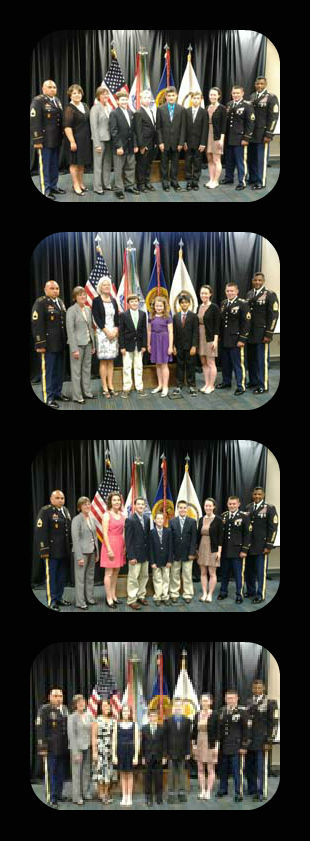 The National Science Teachers Association (NSTA) congratulates the national winners of the 12th annual eCYBERMISSION competition, which NSTA administered for the U.S. Army Educational Outreach Program. The online collaborative learning competition cultivates student interest in science, technology, engineering, and math (STEM) by encouraging sixth through ninth-graders to develop solutions to real-world challenges in their communities. The winning teams (and their supportive families and teachers) have quite a bit to be proud of. More than 4,400 teams entered the eCYBERMISSION competition this year, but only 20 made it to the National Judging & Educational Event finals last week at the National Conference Center in Leesburg, VA.
The National Science Teachers Association (NSTA) congratulates the national winners of the 12th annual eCYBERMISSION competition, which NSTA administered for the U.S. Army Educational Outreach Program. The online collaborative learning competition cultivates student interest in science, technology, engineering, and math (STEM) by encouraging sixth through ninth-graders to develop solutions to real-world challenges in their communities. The winning teams (and their supportive families and teachers) have quite a bit to be proud of. More than 4,400 teams entered the eCYBERMISSION competition this year, but only 20 made it to the National Judging & Educational Event finals last week at the National Conference Center in Leesburg, VA.
Who are these brilliant kids? The 2013-14 national winning teams are:
- 6th Grade: Quake Safe, Gahanna Middle School East, Gahanna, OH
- 7th Grade: Ants Go Marchin’ 2 by 2, Science Rocks U, Whiteface, TX
- 8th Grade: Bro x 4, Wheatland Middle School, Wheatland, WY
- 9th Grade: Crabyotics, Taos Middle/High School, Taos, NM
Each member of the winning team received $5,000 in U.S. E.E. Savings Bonds (matured value), in addition to the $1,000 awarded to them as state winners and $2,000 as regional first-place winners.
The AEOP initiated STEM-in-Action grants this year, up to $5,000 to four national finalist teams whose implementation plans prove that their projects provide the greatest possible impact within their communities. The 2013–14 STEM-in-Action grant winners are:
- Crabyotics, Taos Middle/High School, Taos, NM
- CyberRams, Rocky Run Middle School, Chantilly, VA
- Knightettes of the Twisters, Jenks Middle School, Tulsa, OK
- Ravenclaws, Metea Valley High School, Aurora, IL
In an eCYBERMISSION first, NSTA presented the inaugural People’s Choice Award to The Nighthawks, from Marshall County High School, Benton, KY. The team was chosen by online viewers of the National Showcase which featured presentations by the 20 finalist teams. Viewers voted for their favorite project via Twitter using the hashtag #ecyber14. The team received a set of four iPads from NSTA.
Other awardees included:
- Team Advisor of the Year: Randy Bell, a 34-year science teacher presently teaching 6th, 7th and 8th grade science at Resurrection Christian School in Loveland, Colorado
- Ambassador of the Year: Dee Richardson, education services specialist for the New York City Army Recruiting Battalion
- CyberGuide of the Year: Amy Klopotoski, the Contingency Basing Science & Technology Lead at Natick Soldier Research, Development and Engineering Center
- Virtual Judge of the Year: Philip Samudio, a CES Advance Course Instructor at the Army Management Staff College
While at the NJ&EE, the 71 students of the finalist teams and their Team Advisors met with their Senators and Representatives or their staffs on Capitol Hill, toured national monuments and museums on the Capitol Mall, and participated in the STEM Challenge, in which representatives from the U.S. Army labs engaged students in hands-on activities and interactive demonstrations of the government’s top technologies.
Read the eCYBERMISSION press release to learn more, browse images on the Facebook album, or visit the flickr album with the National Luncheon pictures!
Today’s Guest Blogger is Kate Falk, Senior Manager, Public Relations, National Science Teachers Association
 The National Science Teachers Association (NSTA) congratulates the national winners of the 12th annual eCYBERMISSION competition, which NSTA administered for the U.S. Army Educational Outreach Program.
The National Science Teachers Association (NSTA) congratulates the national winners of the 12th annual eCYBERMISSION competition, which NSTA administered for the U.S. Army Educational Outreach Program.
Joys of summer
By Peggy Ashbrook
Posted on 2014-06-22
Children play year-round but some media for play is more easily used in summer. Some recent play that I’ve observed:
Observing the motion of wood chip mulch as it is shaken back and forth on a spring rider.


Using tools to move water and observe its flow.


Making a tunnel in the sand (damp but not frozen like it often is in winter!).

“Cooking” with leaves and sticks found at the end of a parking lot. One child asked, “Is this a useful plant?” We talked about a definition of weeds and how she wanted to use the plant.
Documenting where the shadow is in the morning, and planning to re-visit the outline in the afternoon.

I hope to have this much fun learning all summer!
Science of Golf: potential and kinetic energy
By Judy Elgin Jensen
Posted on 2014-06-20
 For the first time ever, the women are playing their U.S. Open on the same course as the men. Watch 2010 U.S. Women’s Open champ Paula Creamer in Science of Golf: Potential and Kinetic Energy to see the energy transformations they’ll use to power the ball down the tricky course. Creamer says, “You’re so much in control of what you do…” so even though most women don’t drive the ball as far as the men, look for the competition to be every bit as fierce.
For the first time ever, the women are playing their U.S. Open on the same course as the men. Watch 2010 U.S. Women’s Open champ Paula Creamer in Science of Golf: Potential and Kinetic Energy to see the energy transformations they’ll use to power the ball down the tricky course. Creamer says, “You’re so much in control of what you do…” so even though most women don’t drive the ball as far as the men, look for the competition to be every bit as fierce.
This video is one of ten to further your STEM efforts, brought to you by the partnership of NBC Learn, the United States Golf Association (USGA), Chevron, and NSTA. The NSTA-developed lesson plans for these latest additions all focus on engineering design practices—in this case building a better golf ball or golf club face. If your students don’t have a lot of experience with golf equipment, head over to the nearest garage sale or your local used sporting goods resale shop. Used clubs and balls can be had for very low cost. Or check in with a nearby golf course. People leave behind clubs and balls on the course all the time and they might just have some unclaimed ones to give you.
Find the series—available cost-free—on www.NBCLearn.com. You can also use the links below to access the video or grab the lesson plans (in Word format for easy editing). We look forward to hearing from you about how you expect to use the videos as well as how the lesson plan works out in practice with your students. Once you try it out, please leave comments below each posting!
Video
SOG: Potential and Kinetic Energy features energy transformations and Creamer’s technique, which allows her to get more energy into her swing.
STEM Lesson Plan—Adaptable for Grades 7–12
SOG: Potential and Kinetic Energy guides students in the design of a golf ball covering or club face that optimizes the transfer of energy. It also provides ideas for STEM exploration plus strategies to support students in their own quest for answers as well as a more focused approach that helps all students participate in hands-on inquiry.
Image of Paula Creamer courtesy of Secret in the Dirt.
You can use the following form to e-mail us edited versions of the lesson plans: [contact-form 2 “ChemNow]
 For the first time ever, the women are playing their U.S. Open on the same course as the men. Watch 2010 U.S. Women’s Open champ Paula Creamer in Science of Golf: Potential and Kinetic Energy to see the energy transformations they’ll use to power the ball down the tricky course.
For the first time ever, the women are playing their U.S. Open on the same course as the men. Watch 2010 U.S. Women’s Open champ Paula Creamer in Science of Golf: Potential and Kinetic Energy to see the energy transformations they’ll use to power the ball down the tricky course.
Five Ways to Read Science & Children in 15 Minutes
By Carole Hayward
Posted on 2014-06-19


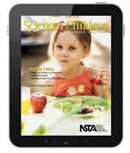 Science and Children editor Linda Froschauer recently wrote about how elementary school teachers must “intertwine science disciplines and provide many types of disciplinary core ideas within a single topic of study.” Each issue of Science and Children aims to provide timesaving resources that alleviate stress, connect to national standards, and enhance overall student learning. Here are five accessible ways to glean the most important information from your journal subscription in just 15 minutes.
Science and Children editor Linda Froschauer recently wrote about how elementary school teachers must “intertwine science disciplines and provide many types of disciplinary core ideas within a single topic of study.” Each issue of Science and Children aims to provide timesaving resources that alleviate stress, connect to national standards, and enhance overall student learning. Here are five accessible ways to glean the most important information from your journal subscription in just 15 minutes.
- Go digital.
Get your digital edition so you flip through the issue from anywhere: the car wash line, the salon, or even in front of a campfire. (You never know when science inspiration will strike!) But you can also stay in touch with the journal on social media by following Facebook and through the NSTA Twitter feed. Get the latest updates to share with other educators and save for later.
- Boost basic knowledge with Science 101.
Elementary educators are expected to have foundational knowledge in many subjects, but all teachers need a refresher from time to time. Use this column to boost your science knowledge on topics as diverse as friction, sound, and chemistry from Bill Robertson, the author of NSTA Press® best-selling series Stop Faking It! Finally Understanding Science So You Can Teach It.
- Peek into a primary classroom with The Early Years column.
In addition to regular features geared for educators working with students in the PreK to 2 grades, the journal dedicates a column to different aspects of early education. Tackle the challenges of this grade band and get accessible expert advice. If you have more time, explore more on The Early Years blog!
- Inform your budget while connecting to national standards.
Before you spend your money on science-related books, DVDs, and other materials, vet your selections with Science and Children’s columns on best bets for student learning, including resources aligned with Next Generation Science Standards (NGSS) and Common Core standards:
- Teaching with Trade Books
Each month, this column selects specific children’s literature based on the journal’s theme while also presenting engaging activities tailored to K-2 grade levels and the 3-5 grade levels. Use this section to find resources and develop curriculum aligned to Common Core standards and NGSS.
- Early Childhood Resource Review
Appearing three times a year, this column provides an enriched evaluation of new resources for PreK and primary classrooms. Make sure not to miss these well-researched reviews of resources in the elementary science educator field.
- NSTA Recommends
Each month include a fresh crop of recommendations on a wide-range of materials, but the online database has more than 4,000 reviews.
- Dive into teacher-to-teacher classroom stories—and submit one of your own.
Every issue of Science and Children features real-life glimpses of classrooms from around the country. Interested in successful science lessons written by science educators? Enjoy proven classroom experiences through the eyes of educational professionals who create an overview of a specific science investigation from introduction to engagement through assessment.
Take it one step further by submitting your own article. Science and Children is always looking for papers from members. Do you have a success story to share or a science investigation you think science teachers across that nation should know about? Read the guidelines and write for Science and Children!
More time?
Each issue of Science and Children provides resources tailored for NGSS and Common Core standards. Exploring the science of sound, Earth and space sciences, and science literacy are just a few of the topics. Before you start planning, search the archives for topics tailored to your field of study or a particular standard.
Learn more about Science and Children on the NSTA website.
Not a member of NSTA? Learn more about how to join.
Laura Berry of Cogberry Creative is our guest blogger for this series. Laura is a communications professional for the education community.
Science of Golf: agronomy
By Judy Elgin Jensen
Posted on 2014-06-18
 Pinehurst No.2, the site of the 2014 U.S. Open, was not the lush, green, wall-to-wall carpet that most people expect to see at one of golf’s majors. This year’s U.S. Open featured green only near the center of the fairways with browning turfgrass and scraggly “native areas” on their flanks. But all of that was by design. Three years ago the restoration of Pinehurst No. 2 began with yanking out 35 acres of Bermuda rough and replacing it with sandy scrub and native plants such as goldenrod, prickly pear, winged sumac, and wiregrass. Sprinkler heads along the perimeter were pulled as well, leaving the native grasses to the whim of weather.
Pinehurst No.2, the site of the 2014 U.S. Open, was not the lush, green, wall-to-wall carpet that most people expect to see at one of golf’s majors. This year’s U.S. Open featured green only near the center of the fairways with browning turfgrass and scraggly “native areas” on their flanks. But all of that was by design. Three years ago the restoration of Pinehurst No. 2 began with yanking out 35 acres of Bermuda rough and replacing it with sandy scrub and native plants such as goldenrod, prickly pear, winged sumac, and wiregrass. Sprinkler heads along the perimeter were pulled as well, leaving the native grasses to the whim of weather.
Why? You’ll find part of the answer in Science of Golf: Golf Course Agronomy. This installment explores the turf under the turfgrass and how golf courses of the future will likely look more like Pinehurst No. 2 and less like that wall-to-wall green. Ongoing research and environmental stewardship are key segments of the USGA’s Environmental Commitment. Use the connected NSTA-developed lesson plans below to bring engineering design process into your life science class—a still-rare opportunity.
Like last year, the ten videos added to the Science of Golf series are produced by NBC Learn in partnership with the United States Golf Association (USGA) and Chevron. The videos are linked below and available cost-free on www.NBCLearn.com.
Video
SOG: Golf course Agronomy discusses water usage, plant and soil structure, and conservation related to maintaining turfgrass on golf courses.
STEM Lesson Plan—Adaptable for Grades 7–12
SOG: Water Conservation describes how students might design a solution to golf course recovery or water retention. It also provides ideas for STEM exploration plus strategies to support students in their own quest for answers as well as a more focused approach that helps all students participate in hands-on inquiry.
Image of Luke Guthrie on Pinehurst No. 2, courtesy of Zach Frailey.
You can use the following form to e-mail us edited versions of the lesson plans: [contact-form 2 “ChemNow]
 Pinehurst No.2, the site of the 2014 U.S. Open, was not the lush, green, wall-to-wall carpet that most people expect to see at one of golf’s majors. This year’s U.S. Open featured green only near the center of the fairways with browning turfgrass and scraggly “native areas” on their flanks. But all of that was by design. Three years ago the restoration of Pinehurst No.
Pinehurst No.2, the site of the 2014 U.S. Open, was not the lush, green, wall-to-wall carpet that most people expect to see at one of golf’s majors. This year’s U.S. Open featured green only near the center of the fairways with browning turfgrass and scraggly “native areas” on their flanks. But all of that was by design. Three years ago the restoration of Pinehurst No.
Literacy and science: Reading and comprehending
By Mary Bigelow
Posted on 2014-06-17
 One of our goals for the coming year is to incorporate more literacy practices into science instruction. Some of our teachers are eager to do more of this, while others are more skeptical about taking on this responsibility. As the department chair, I’m looking for some discussion ideas and resources.
One of our goals for the coming year is to incorporate more literacy practices into science instruction. Some of our teachers are eager to do more of this, while others are more skeptical about taking on this responsibility. As the department chair, I’m looking for some discussion ideas and resources.
—Kevin, Chesapeake, Virginia
The topic of literacy and science has been around for as long as I can remember (and was the focus of my master’s research project and several action research projects). These days the topic has taken on a new life with the inclusion of obtaining, evaluating, and communicating information as a Scientific and Engineering Practice within the Next Generation Science Standards (NGSS). Many state standards and local curricula in communications or language arts include four processes: reading, writing, speaking, and listening. Although they were designed for reading and language arts classes, it would be hard to imagine scientists who do not use these processes daily.
I suspect there are those who see the first part of the practice, obtaining, as simply locating information. That’s not a problem with a wealth of sources on the Internet. But are students able to understand what they’re reading when they find it? If they struggle with traditional print resources, they will also struggle with online text. The struggle does not disappear when students use electronic devices. Will students be able to evaluate what they read or will they simply accept whatever they find on the Internet as factual?
Unlike what students might see in a reading or English class, science resources are not usually written as stories or in chronological sequence. Science text often starts with a main concept and then provides descriptions or supporting details. Science text often uses headings, subheadings, abstracts, summaries, sidebars, footnotes, and graphics. Science text uses specialized vocabulary (often highlighted and linked to a glossary) and may be written from an expert point of view. Students may not realize reading science text can be a slower process than reading a novel or story, and rereading a section is appropriate and even encouraged. Many of the reading skills students learn in their other classes can be transferred to science, but students may need some help to make the connections. And who better to help them than their science teachers, who know how to read science materials.
Several Ms. Mentor columns have addressed literacy topics related to reading, vocabulary, and visual literacy:
Science and reading. I have to attend a workshop on teaching reading in the content areas. Is it really the job of a secondary science teacher to teach students how to read?
Comprehending science text. I’m incorporating several strategies this year to help my life science students understand written information. I provided study guides with questions to answer, graphic organizers, and quizzes on the information, but they still don’t seem to comprehend what they read. Do you have any other suggestions?
Science-related nonfiction books. I teach science at the elementary level. I’d like to improve our nonfiction science collection for students to read outside of class or for teachers to use during read-alouds. I want to be sure what we purchase is appropriate; do you have any suggestions or lists of recommended books for this level?
Visual literacy. Our district has a goal for every teacher to reinforce student literacy skills. We’re struggling with this at the secondary level. Most of our students seem to have decent reading levels, and the reading specialists provide extra help for those who need it. So what can we do in science classes to improve student literacy? (See also the Visual literacy collection in the NSTA Learning Center.)
Words, words, and more words. I’d like to change my approach to learning vocabulary. Even when I ask students to write definitions in their own words, they don’t seem to understand the terms. Any suggestions?
Putting science words on the wall. I’ve seen “word walls” in elementary classrooms, but I wonder whether older students would find them helpful in dealing with vocabulary. What should I consider in trying this idea?
 One of our goals for the coming year is to incorporate more literacy practices into science instruction. Some of our teachers are eager to do more of this, while others are more skeptical about taking on this responsibility. As the department chair, I’m looking for some discussion ideas and resources.
One of our goals for the coming year is to incorporate more literacy practices into science instruction. Some of our teachers are eager to do more of this, while others are more skeptical about taking on this responsibility. As the department chair, I’m looking for some discussion ideas and resources.
—Kevin, Chesapeake, Virginia
I'm a New Teacher: How Can NSTA Help Me?
By Carole Hayward
Posted on 2014-06-17

According to the National Commission on Teaching and America’s Future, almost half of America’s new teachers leave the profession within the first five years. Therefore, it is vital that new teachers receive the support necessary to succeed. NSTA provides encouragement to beginning science teachers through programs such as the New Science Teacher Academy.
NSTA member Navneet Riar, a first-year high school biology and chemistry teacher, has discovered first-hand the advantages of being an NSTA member. Since joining right out of college, she has attended two NSTA national conferences and benefited from a number of NSTA resources that have helped her navigate the challenges of being a new teacher.
Riar: My first priority coming out of graduate school was to attend an NSTA conference. I joined NSTA when I was still a student teacher. I applied for a travel scholarship and got it. So, it was much cheaper for me to attend the conference. And, as a student teacher, NSTA had special workshops for new teachers and a meet-and-greet session at the conference. The conference was a really nice introduction to the organization. My first conference was the 2013 NSTA National Conference on Science Education in San Antonio. I also went to the one in Boston this year.
I was still student teaching when I attended the conference in San Antonio, and I wasn’t sure what I was going to end up teaching. Therefore, I attended a bunch of different workshops and sessions; I went to some for high school chemistry and some for biology. I also went to marine education sessions, which is good because I’m teaching marine science this year.
There are so many teachers at the conference and you say to yourself, ‘Wow, all of these people really like teaching.’ It’s a good motivator.
A huge help to me was an article in “The New Teacher Toolbox” section of The Science Teacher journal, titled “Your First Conference.” I followed the article’s suggestions and brought a bag for all of the free stuff handed out in the exhibitor’s area. The advice in the article was super helpful. I find lots of great tips in “The New Teacher Toolbox” column each month.
What other NSTA resources do you use?
Riar: I posted a question on the NSTA Learning Center before I started teaching asking how I should spend my summer getting ready. I received really good advice. Fellow teachers told me to spend time mastering content. That was really good advice, especially since I ended up teaching chemistry my first year, which I had less experience with.
In NSTA Reports and online, there is a freebies section that I regularly look at to see if there is anything I can quickly grab and use. This is especially helpful for new teachers who are looking for low-cost, quick, and easy finds.
I really like being a member of NSTA. Hopefully I can start getting involved more. It’s a great place to network and get to that next level in your career.
Not a member of NSTA? Learn more about how to join.
Jennifer Henderson is our guest blogger for this series. Before launching her freelance career as a writer/editor, Jennifer was Managing Editor of The Science Teacher, NSTA’s peer-reviewed journal for high school science teachers.
From Viruses to Whales, Help Your Students Learn the Common Patterns of Evolution
By Carole Hayward
Posted on 2014-06-16
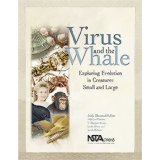 What’s it like to study evolution as a scientist? That’s the question Judy Diamond, with the help of Carl Zimmer, E. Margaret Evans, Linda Allison, and Sarah Disbrow, set out to answer in writing Virus and the Whale: Exploring Evolution in Creatures Small and Large. The book issues an invitation to middle school students to get engaged in hands-on, inquiry-based activities that are based on current research projects—ones that have had a major influence on how today’s scientists think about evolution.
What’s it like to study evolution as a scientist? That’s the question Judy Diamond, with the help of Carl Zimmer, E. Margaret Evans, Linda Allison, and Sarah Disbrow, set out to answer in writing Virus and the Whale: Exploring Evolution in Creatures Small and Large. The book issues an invitation to middle school students to get engaged in hands-on, inquiry-based activities that are based on current research projects—ones that have had a major influence on how today’s scientists think about evolution.
The book is a product of the Explore Evolution project, a joint effort between science museums and 4-H organizations in the Midwest, to bring current research on evolution to middle schoolers and educators as well as the general public. Because the project has produced new permanent exhibit galleries for partner museums who are part of this effort (a full list of which can be found in the book) Virus and the Whale can be used in conjunction with these museum exhibits or as an independent resource.
The unique title of the book was taken from the central theme of the Explore Evolution project: “to show common patterns and principles in the evolution of organisms ranging in size from viruses to whales.” A secondary theme for the book is intended to show how scientific research uncovers new ideas “about how the natural world operates, and how these ideas are continuously modified by new research.”
“As educators, our task is to help young people feel that it means to view the world form a scientific and evolutionary perspective,” Diamond writes in the book’s preface. “This book provides durable, hands-on and easy-to-use activities to bring investigations about evolution to youth in any of the settings where they can do science with their peers.”
Eugenie C. Scott, executive director of the National Science Education Center, Inc., who wrote the introduction to the book, said, “students should know about (evolution) for the sheer intellectual joy of the experience.” Scott’s hope for the educators who read this (be they teachers, youth leaders, or museum curators) is that they can help people “appreciate evolution and how it helps us to makes sense of so much of the living world.”
Designed to encourage social interaction between young people, the book’s activities will work in practically any setting. Each activity begins with a short essay that gives students an overview of a scientist’s research project on a particular organism and is followed up by a four-part, hands-on activity. Students first go through a brief exercise, which introduces them to the organism being studied. This is followed by two sections of investigations, each based on an aspect of the scientist’s research. The two final sections of each activity include an assessment tool where students are asked to think like a science reporter and then summarize their understanding of the chapter’s activities.
Whether it’s a middle school science classroom, a club or an afterschool program, this book’s easy-to-use activities provide the perfect launch pad for making the teaching of evolution interesting and relatable. There’s even some humor thrown in for good measure—something every middle school educator can appreciate!
This book is also available as an e-book.



